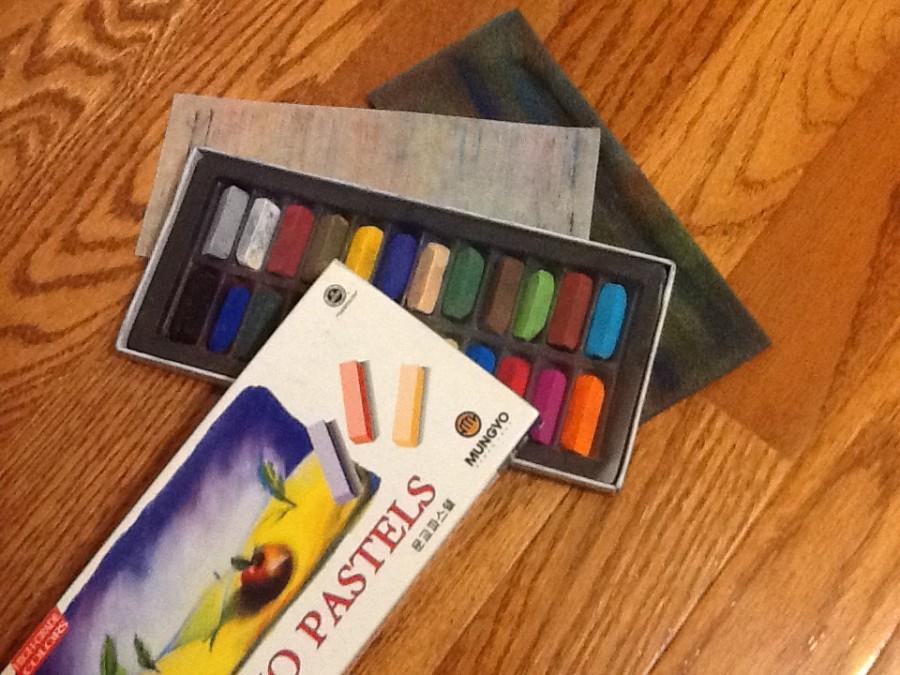Why learning about art is necessary in education
Photo by Esther Kim. As the society changes more rapidly than ever before, it is necessary to reflect upon the alterations with art.
February 15, 2015
Last winter, I spent a week of my vacation in New York City, blissfully enjoying the metropolitan of impressive lights and relentless traffic.
Surprisingly, the most memorable experience of my trip was going to the Museum of Modern Art (MoMA), which also happened to be one of the bucket-list activities that I had been waiting patiently for years.
As a fan of modern art, the experience was ineffable. I awed at René Magritte, Vincent Van Gogh and Claude Monet. I marveled at Roy Lichtenstein and Henry Matisse. However, as I went deeper into the gallery, the more I realized that my knowledge of the arts was rudimentary at best. It was only through the thorough lectures of my mother, who was deeply aware of art for long, that I was barely able to recognize the never-heard-before names of respectable artists in the art world. I remember quietly repeating the names, “Kooning, Newman, Kooning, Newman,” but it didn’t take long to forget them for the one-thousandth time.
In frustration, I remember asking myself: What is the use of memorizing these names? What do we get from appreciating “artworks” that look as if someone had sprayed random colors of paint while blindfolded?
Art, after all, is nothing like math or reading. It is never on the Scholastic Aptitude Test (SAT), and it certainly is not on the American College Testing (ACT), either. However, as with literature and history, art is an evolving concept, and one that deals directly with culture and the human mind.
As the world evolves, people change as well. In art, it is possible to directly witness such changes happening. Impressionism, led by the French artist, Monet, began with the desire to break free from the standards of art and to depict the nature, the light and the world through an independent and liberal outlook. It is also possible to sense a blend of exotic elements in Monet’s works, in which he was greatly influenced by Japanese artistic elements and decided to incorporate them into his paintings.
Furthermore, modern artistic movements, such as abstract expressionism and Pop Art, signify the rapid changes in the contemporary society. With technological advancements and the invention of the camera, modern art evolved into a heavily abstract movement, with artists including Piet Mondrian and Wassily Kandinsky introducing artworks composed of lines and shapes that vaguely resembled anything that people had seen in the past. In addition, with the increasing attachment to capitalism in the modern society, the artistic movement of Pop Art incorporated characteristics of intense commercialization and glamorized life into its vast collection, most notably characterized by Andy Warhol’s works.
The history of art and the specific movements that represent its evolution are essential for learning about the changes in the milieu of a society. An artwork is the direct representation of the raw emotions, reflections and feelings that are associated with the time; the continuous trends of art vastly resemble the constant fluctuations of the human psychology and mind.
Sometimes history is regarded as a subject that requires pure memorization of events or one that deals with instances of the past. However, learning history is the same as learning the individual voices of people, a society or a nation and gives us a realization that the small opinions of individuals collect into an enormous evolution of the world.
History is a subject that provides an outlook to the future by investigating the past. And art is the most accurate depiction of the voices that have changed the world. Think of Jacques-Louis David, the painter who depicted the passion of the French revolution. Think about the massive campaign of propaganda posters during World War I. Think about the political cartoons today that satirize and address the nation’s concerns.
Art is everywhere, and it is evolving constantly—even today. When artists could only project their imagination on a blank canvas, we are now constantly exposed to art in Facebook, Instagram and Pinterest. As a new culture of globalization influences the society, so does a new culture of art.
Learning about art is learning about the human, cultural and societal paradigm. Fortunately, at Jefferson, subjects such as Advanced Placement (AP) Art History are beginning to introduce the significance of art to the school community. As we begin choosing our future schedules for the upcoming year, we should start asking the question: Why are we still hesitating to learn more about art?






